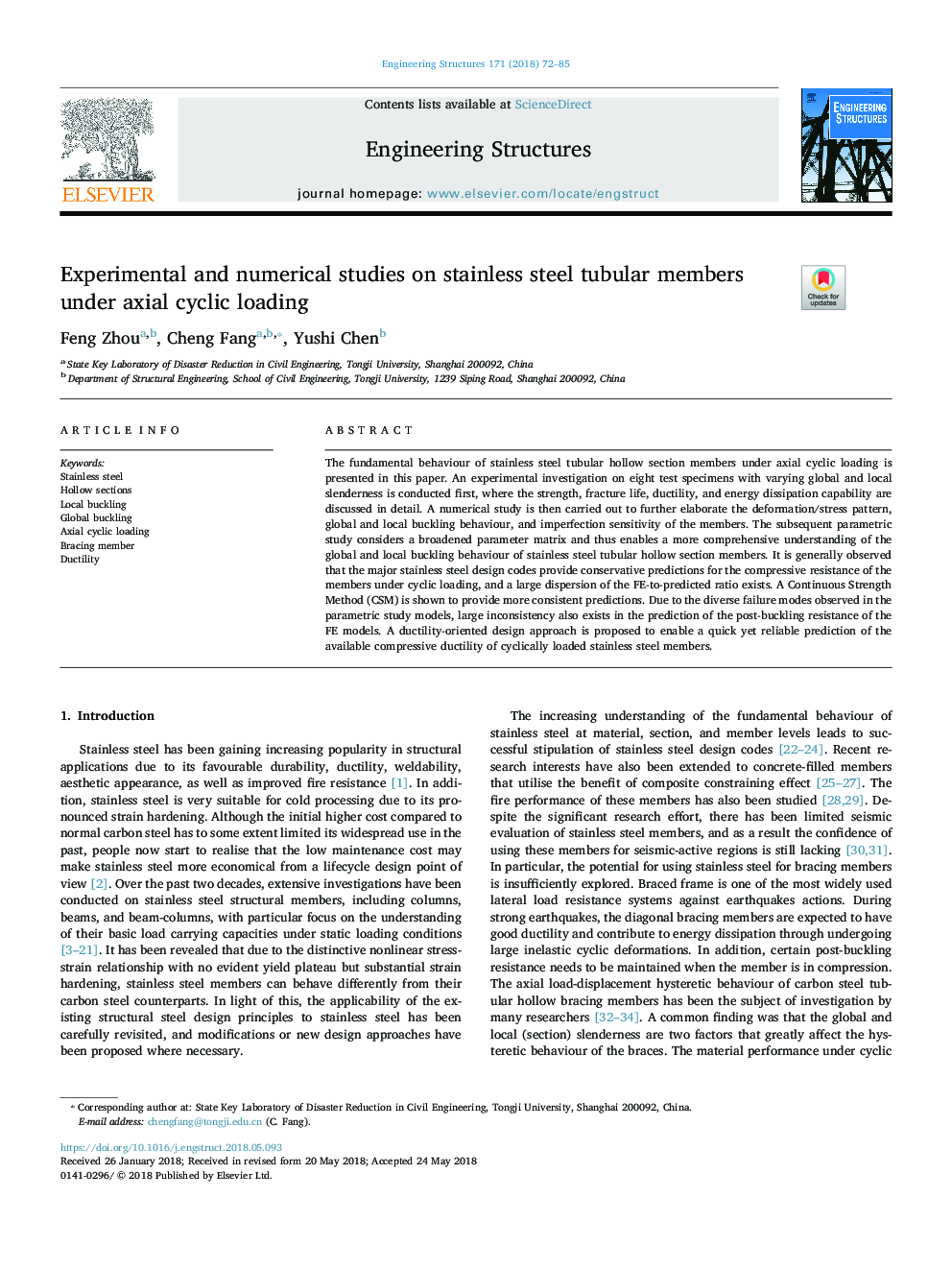| Article ID | Journal | Published Year | Pages | File Type |
|---|---|---|---|---|
| 6736029 | Engineering Structures | 2018 | 14 Pages |
Abstract
The fundamental behaviour of stainless steel tubular hollow section members under axial cyclic loading is presented in this paper. An experimental investigation on eight test specimens with varying global and local slenderness is conducted first, where the strength, fracture life, ductility, and energy dissipation capability are discussed in detail. A numerical study is then carried out to further elaborate the deformation/stress pattern, global and local buckling behaviour, and imperfection sensitivity of the members. The subsequent parametric study considers a broadened parameter matrix and thus enables a more comprehensive understanding of the global and local buckling behaviour of stainless steel tubular hollow section members. It is generally observed that the major stainless steel design codes provide conservative predictions for the compressive resistance of the members under cyclic loading, and a large dispersion of the FE-to-predicted ratio exists. A Continuous Strength Method (CSM) is shown to provide more consistent predictions. Due to the diverse failure modes observed in the parametric study models, large inconsistency also exists in the prediction of the post-buckling resistance of the FE models. A ductility-oriented design approach is proposed to enable a quick yet reliable prediction of the available compressive ductility of cyclically loaded stainless steel members.
Related Topics
Physical Sciences and Engineering
Earth and Planetary Sciences
Geotechnical Engineering and Engineering Geology
Authors
Feng Zhou, Cheng Fang, Yushi Chen,
